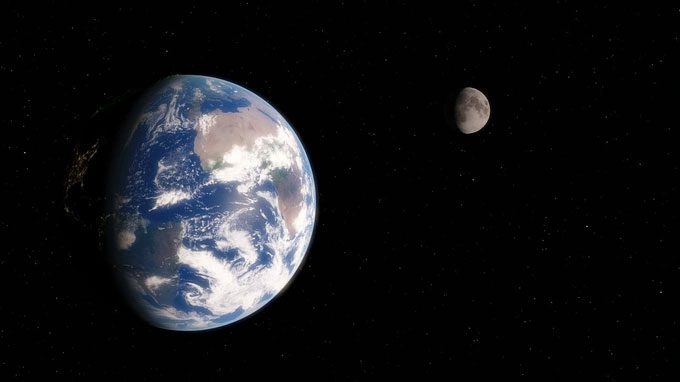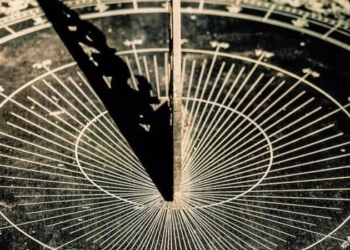There was a time when Earth maintained a stable state, spinning continuously, and a day (or one complete rotation) lasted only 19 hours.
Today, we are accustomed to a 24-hour day on Earth, with a week consisting of 7 days. However, throughout its formation history, Earth experienced a chaotic phase where everything operated almost sluggishly and even came to a standstill.

In the past, the Moon was closer to Earth, causing Earth to take only 19 hours to complete a rotation. (Image: Sky).
During this time, tectonic activities on Earth decreased, while geochemical processes began to emerge, leading to an almost stunted evolution of life, even in its simplest forms.
A recent study by scientists from Curtin University in Australia has revealed fascinating truths about this period for the first time. They suggest that this timeframe coincided with the moment when the Blue Planet floated in a stable state, spinning continuously, and a day (or one complete rotation) lasted only 19 hours.
This process lasted about 1 billion years and is considered the result of a fragile balance between opposing forces that existed in Earth’s distant past.
At that time, the Moon was also closer to Earth and maintained a constant distance. Today, the Moon is gradually “slipping” away from the gravitational pull between it and Earth, moving further away from our planet.
This shift affects the tidal rhythms on Earth. Combined with geological factors and the oscillation of Earth’s axial tilt, this has caused our planet to undergo significant changes.
Specifically, since the Moon has been moving outward, Earth has gradually slowed its rotation, making a day longer, resulting in the 24-hour day we have now.
According to scientists, this number continues to increase daily, meaning that a day on Earth will become longer. Some studies have calculated the rate of change in hours per day, averaging about 0.000015 seconds per year.




















































